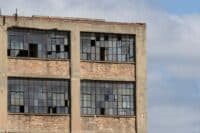
In what would be a blockbuster deal, the Wall Street Journal reported on Tuesday that NextEra Energy Inc. (NYSE: NEE), the country’s largest publicly traded utility company, suggested a takeover (presumably friendly) to Duke Energy Corp. (NYSE: DUK), the country’s third-largest by market cap. Duke reportedly rejected the idea, but NextEra remains interested.
[in-text-ad]
At Tuesday’s closing stock prices, the combined company would have a market cap exceeding $190 billion. Number two would be Dominion Energy Inc. (NYSE: D), with a market cap of around $65 billion.
Whether federal and state regulators would ever approve such a merger may be the deciding factor. The two companies’ regulated services represent the vast majority of their customer bases, but a closer look reveals some geographic overlap in the two companies’ businesses, but not as much as we might expect.
NextEra serves about 5.1 million customers with the vast majority (more than 5 million) located in Florida. In most of the states, NextEra owns and operates only wind and solar generation that is sold on to regulated utilities that must meet renewable mandates in the states where they operate.
As of June 30, NextEra’s nameplate capacity totaled 25.4 gigawatts (GW), of which 16.3 GW was wind-generated, 3.4 GW was solar-powered, 3.1 GW was nuclear-powered, 1.8 GW was natural gas-fired and 878 megawatts (MW) was oil-fired.
Duke owned about 50.2 GW of electricity generation capacity at the end of last year. The company reported approximately 7.8 million electricity customers in six states and more than 1.5 million natural gas customers in five states. Duke serves approximately 4 million in the Carolinas and 1.7 million customers in Florida. That overlap in Florida could be a problem for regulators.
About 42% of Duke’s generating capacity is powered by natural gas or fuel oil and 33% is powered by coal. Nuclear-power generation accounts for 18% of the total and hydro and solar account for 7% of capacity.
Both companies have grown primarily through acquisitions. Duke acquired Progress Energy in 2016 for around $5 billion. About 40% of Duke’s customers in the Carolinas were added with that acquisition.
NextEra has spread its tentacles in the renewables sector with major acquisitions like the two Desert Sunlight solar farms (550 MW capacity) in California and the Silver State Solar farm in Nevada (250 MW).
Where NextEra owns no coal-fired generation, Duke owns six coal plants in North Carolina. Since 2010, Duke has retired more than 6.5 GW of coal-fired generation from 51 coal-burning units. Five more units that generate 862 MW of electricity will be retired by 2024. The company’s plans for retiring its coal plants extend to 2048.
For regulators, issues related to competition in Florida could be the major sticking point. If the federal or state government seeks the divestment of Duke’s Florida business, that might put an end to any thought of a big merger.
NextEra has no regulated business in the Carolinas and Duke has none in Georgia or Alabama, where NextEra’s Gulf Power services about 500,000 customers.
The largest regulated utility in the southeastern United States is Southern Company (NYSE: SO), which serves about 4.7 million customers in Georgia, Alabama and parts of Mississippi.
Richmond, Virginia-based Dominion Energy serves about 2.6 million electricity customers in North Carolina and 1.1 million electricity and natural gas customers in South Carolina. The company also owns about 1.5 MW of renewable generation.
One benefit of the proposed merger would be the difficulty a company the size of NextEra+Duke would present to an activist investor like Paul Singer’s Elliott Management. Just this year, Elliott has announced investments in two utilities, CenterPoint and Evergy, and gotten the companies to yield to his demands for either a business review or a strategic review along with more investment in growth.
Of course, investors tend to like Elliott’s ability to shake down the company’s board and management for higher returns. Company executives would rather that investors keep bidding the stock up and keep quiet.
Duke Energy stock traded up about 5% at $86.56 in the noon hour Wednesday, in a 52-week range of $62.13 to $103.79. The stock’s consensus price target is $92.29, and Duke pays an annual dividend of $3.86 (yielding 4.65%).
NextEra Energy stock traded down about 4.4%, at $270.75 in a 52-week range of $174.80 to $299.30. The consensus price target is $291.35, and the company pays a dividend of $5.60 (yield of 1.98%).
Travel Cards Are Getting Too Good To Ignore (sponsored)
Credit card companies are pulling out all the stops, with the issuers are offering insane travel rewards and perks.
We’re talking huge sign-up bonuses, points on every purchase, and benefits like lounge access, travel credits, and free hotel nights. For travelers, these rewards can add up to thousands of dollars in flights, upgrades, and luxury experiences every year.
It’s like getting paid to travel — and it’s available to qualified borrowers who know where to look.
We’ve rounded up some of the best travel credit cards on the market. Click here to see the list. Don’t miss these offers — they won’t be this good forever.
Thank you for reading! Have some feedback for us?
Contact the 24/7 Wall St. editorial team.
 24/7 Wall St.
24/7 Wall St.
